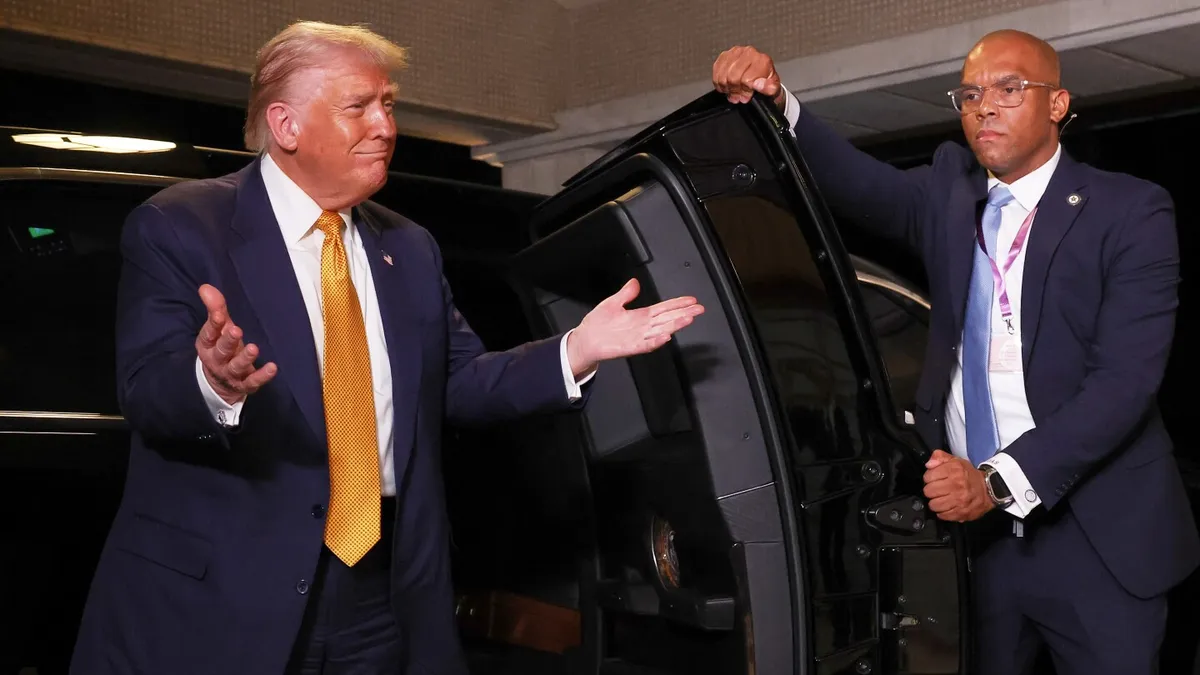
GYEONGJU, South Korea (AP) — Following a successful diplomatic mission in Japan that resulted in $490 billion in investment pledges, President Donald Trump is preparing for a crucial meeting with South Korea’s President Lee Jae Myung this Wednesday. However, negotiations for a trade deal between the United States and South Korea remain complex and challenging. Officials from both Washington and Seoul indicate that the main obstacle is Trump's request for South Korea to invest $350 billion directly into the United States.
South Korean officials express concerns that a direct cash infusion could jeopardize their economy. Instead, they prefer alternatives such as loans and loan guarantees. They also seek a currency swap line to ensure a smooth flow of their currency into the U.S. The significant gap between what Trump is demanding and what South Korea can realistically provide poses a serious threat to the upcoming discussions in Gyeongju, a historically rich city hosting the annual Asia-Pacific Economic Cooperation (APEC) summit.
Prior to Trump’s arrival, President Lee addressed a business forum, cautioning against rising trade barriers. He stated, “In a time when protectionism and nationalism are on the rise, words like ‘cooperation,’ ‘coexistence,’ and ‘inclusive growth’ may sound hollow.” He emphasized that during crises, APEC’s role as a platform for solidarity becomes even more critical.
Oh Hyunjoo, South Korea's deputy national security director, remarked to reporters that the trade negotiations have been progressing “a little bit more slowly” than anticipated. “We haven’t yet reached an agreement on issues like the structure of investments, their formats, and how profits will be shared,” she explained. This slow pace marks a stark contrast to Trump’s experience in Japan, where the government has actively engaged in fulfilling its commitment of $550 billion in investments under a prior trade agreement.
During a dinner with business leaders in Tokyo, Commerce Secretary Howard Lutnick announced commitments totaling up to $490 billion. Trump cultivated a strong rapport with Japan’s new prime minister, Sanae Takaichi, during his visit, participating in events that highlighted major energy and technology investments funded by Japan.
As the discussions unfold, South Korea continues to grapple with a 25% tariff on automobiles, creating a competitive disadvantage for its manufacturers, such as Hyundai and Kia, against Japanese and European competitors who benefit from a lower 15% tariff.
Since taking office in June, President Lee has had a generally positive relationship with Trump, having previously met with him at the White House in August. However, tensions have surfaced, particularly following a U.S. immigration raid at a Hyundai plant in Georgia in September, which led to the detention of over 300 South Korean workers and sparked outrage within South Korea.
Lee indicated that companies might be reluctant to pursue future investments unless the visa system improves. He stated, “If that’s not possible, then establishing a local factory in the United States will either come with severe disadvantages or become very difficult for our companies.” In early October, South Korea’s Foreign Ministry announced that the U.S. had agreed to permit South Korean workers on short-term visas or through a visa waiver program to support industrial development in America.
In response to the immigration raid, Trump remarked, “I was opposed to getting them out,” suggesting that an improved visa system would facilitate the entry of skilled workers for companies.
During his visit to South Korea, Trump is also expected to engage in a significant meeting with Chinese leader Xi Jinping on Thursday. Despite ongoing trade tensions between Washington and Beijing, both parties have expressed a willingness to ease hostilities. Trump indicated that he anticipates reducing tariffs imposed on China concerning the flow of fentanyl ingredients.
Trump also acknowledged the likelihood that he would not meet with North Korean leader Kim Jong Un during this trip. Although he had previously considered extending his stay in South Korea, he later stated that “the schedule was very tight.” North Korea has consistently rebuffed diplomatic overtures from both Washington and Seoul, insisting that discussions cannot resume until the U.S. drops its demands for North Korea’s denuclearization.
In a show of military capability, North Korea recently launched sea-to-surface cruise missiles into its western waters, coinciding with Trump’s visit. When asked about the missile test, Trump downplayed the event, noting, “He’s been launching missiles for decades, right?”
While Trump and Kim had met during Trump's first term, their talks did not yield any agreements regarding North Korea’s nuclear ambitions.